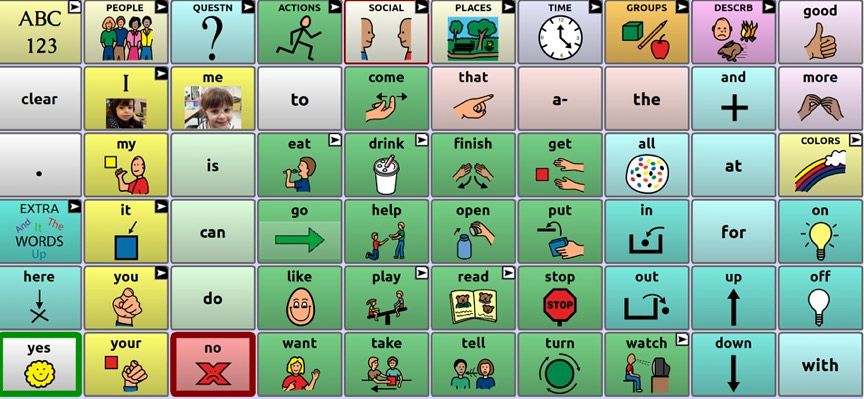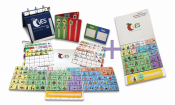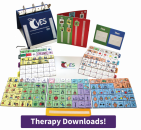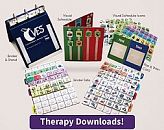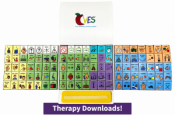COMING SOON
$189.00 USD
1.5 ASHA CEUs
Competencies In Using Alternative And Augmentative Communication (AAC) For Language Development #e310
Presenters: Megan Brazas, MA, CCC-SLP, QOM & Beth Speaker-Christensen, MA, CCC-SLP/L, ATP
Gain a deeper understanding of language development, AAC device options, the evaluation process, and treatment planning.
Includes downloadable resources for assessment and therapy.
DIFF Model To Avoid Device Abandonment
As many as one out of three AAC systems may be abandoned and left on a shelf within a year by caregivers who could not—or would not—make it work. Clinicians will be introduced to the DIFF Model, Design-Implement-Follow-Through-Follow-Up, to avoid device abandonment and support communication partners across settings.
This comprehensive online training provides a step-by-step process to conduct dynamic and collaborative AAC assessment, select optimal AAC systems for your learners, effectively coach communication partners, observe video examples of AAC learners during evaluation and therapy, understand and use AAC prompt hierarchies, and expand vocabulary using AAC treatment principles. Downloadable bonus resources (PDFs) allow you to get started with assessment and therapy with your current caseload.
The treatment methods, strategies, and techniques presented in this course follow the most current research in Alternative and Augmentative Communication. Participants will explore a collection of tools available to use during the evaluation and funding process as well as throughout treatment. Participants will learn to formulate appropriate goals based on Light and McNaughton’s four communicative competencies (Light, J. C., & McNaughton, D. 2014).
Case studies will be presented to facilitate the AAC evaluation and assessment process and to aid in treatment planning and caregiver coaching. Also included are AAC data collection tools for use during your evaluation and intervention planning. Participants will learn about resources and support that are available no matter which stage they are currently within during their AAC evaluation and treatment journey.
Course is offered for 1.5 ASHA CEUs – 15 Contact Hours. Stop and re-start the course at any point. Learners retain access to course content after completion for ongoing reference and review.
This Course Includes 6 Learning Modules.
Stop & start course at any point.
Learners retain access to course content after completion for ongoing review.
Module One:
Using AAC for Language Development Part 1
Module run time: 1:18:30
- Factors of typical language development as they relate to Alternative and Augmentative Communication.
- Core vocabulary, personal core, and fringe vocabulary as they relate to typical language development.
- Five different grammar structures as they relate to AAC.
- Observation of AAC Learners using their AAC systems to communicate at least 5 different communicative functions.
- The importance of including Swear Words, Slang, “Taboo”, and Sexual Health vocabulary in an AAC Learner’s communication system.
Module Two:
Using AAC for Language Development Part 2
Module run time: 1:09:50
- Imageability and how it relates to an AAC Learner and vocabulary selection in a communication system.
- Relationship between Autism, core vocabulary, and AAC.
- How to best support an Autistic individual with their vocabulary selection.
- Communicative functions that help with social emotional regulation.
- Spontaneous Novel Utterance Generation for low and high tech AAC.
- Observation of AAC Learners using high tech AAC to target at least 4 communicative functions across Brown’s morphosyntactic structures.
- Assessment tools for an individual with complex communication needs.
Module Three:
A Spectrum of Device Choices, Options, and Features
Module run time: 3:13:58
- AAC evaluation, including roles and responsibilities of team members.
- Role of the AAC Learner in the evaluation process.
- Selecting and using low-tech systems (PODD, PECS, CVES, Core Boards).
- Differences between language representation across platforms, such as Wordpower, Unity, LAMP, Core First, and TD Snap Motor Plan.
- Differences between iOS apps and user areas on high tech AAC devices.
- Motor automaticity as it relates to language representation in AAC systems.
- Differences between speech generating devices as durable medical equipment versus iPad applications.
- Bilingual User Areas for High Tech AAC.
Module Four:
Evaluation, Assessment, and Feature Matching
Module run time: 2:47:12
- Obstacles that impact evaluation, including our perception bias.
- How to effectively write an evaluation report for Medicaid and private insurance.
- Funding process for durable medical equipment.
- Define the roles and responsibilities of the AAC Evaluation Team Members.
- Language assessment tools for an AAC user and how to implement during an AAC evaluation.
- Reasonable expectations for data collection during the evaluation process.
- Components of motor assessment abilities during AAC evaluation.
Module Five:
Access and Alternative Access Options
Module run time: 2:45:35
- Direct selection and indirect selection and types of scanning patterns.
- Variables that impact the effectiveness of eyegaze.
- AAC features for children with CVI and complex communication needs.
- AAC accessories that can improve access to AAC.
- Relationships between sensory processing challenges, hypermobility, Autism, and access and features to improve access.
- Branches of the Autonomic Nervous System and how they impact the sensory system and AAC access.
Module Six:
Customization, Treatment Planning, and Interventions
Module run time: 3:50:12
- Goals of intervention using AAC.
- Least to most versus most to least prompt hierarchy for AAC.
- Treatment approaches; how to integrate AAC intervention into routines.
- Components of caregiver coaching.
- How to write therapy goals for AAC communicative competencies.
- The AAC DIFF process to avoid device abandonment and strategies to support follow through.
- Aided Language Input and how to support environmental based opportunities for language learning throughout an AAC Learner’s day.
- Therapy strategies to embed language across an AAC Learner’s day.
Course Overview – Run Time: 15:05:17
1. Competencies in Using AAC for Language Development Part 1.
2. Competencies in Using AAC for Language Development Part 2.
3. What is AAC? A Spectrum of Device Choices, Options, and Features.
4. Evaluation, Assessment, and Feature Matching for AAC.
5. Access and Alternative Access Options for AAC.
6. Customization, Treatment Planning, and Interventions in AAC.
Stop and re-start the course at any point. Learners retain access to course content after completion for ongoing reference and review.
The content of this online CE course does not focus exclusively on any specific proprietary product or service. Presenter financial and non-financial disclosures may be found in the Presenter & Disclosures area.
Course Format
Video PowerPoint presentation with author narration & downloadable handout. Stop and re-start the course at any point. Learners retain access to course content after completion for ongoing reference and review. Also included are downloadable bonus resources for assessment and therapy with your current caseload.
Reviews
Coming Soon . . . .
Course Objectives
Module One
- Explain at least 3 factors of typical language development as they relate to Alternative and Augmentative Communication.
- Identify 3 types of vocabulary relating to AAC; particularly core, personal core, and fringe.
- Name the 3 components of the Bloom and Lahey Model of Language.
- Describe at least 5 different grammar structures as they relate to AAC.
- Observe AAC Learners using their AAC systems to communicate at least 5 different communicative functions.
- Define 3 types of phrasal verbs, how they relate to core vocabulary, and list examples of phrasal verbs for intervention with AAC Learners.
- Describe the importance of including Swear Words, Slang, “Taboo”, and Sexual Health vocabulary in an AAC Learner’s communication system.
- Explain how to customize an AAC Learner’s communication system with personal core words.
Module Two
- Define imageability and how it relates to an AAC Learner and vocabulary selection in a communication system.
- Describe the relationship between Autism, core vocabulary, and AAC.
- Discuss Autism as a neurodevelopmental disorder and how to best support an Autistic individual with their vocabulary selection in an AAC system.
- Define functional communication and list at least 4 communicative functions that help with social emotional regulation.
- Observe AAC users using high tech AAC to target at least 4 communicative functions across Brown’s morphosyntactic structures.
- Define Spontaneous Novel Utterance Generation as it relates to low and high tech AAC.
- Explain at least 5 reasons pre-stored phrases and sentences are important to include in an AAC Learner’s communication system.
- List at least 5 assessment tools for an individual with complex communication needs.
- Identify 2 features of the Fitzgerald Key of color coding.
Module Three
- Discuss the AAC Evaluation process, including roles and responsibilities of team members.
- Discuss the roles of the AAC Learner in the evaluation process as a full time or part time AAC User.
- Identify one key element of four mainstreamed communication programs.
- Explain how to select and use at least 4 different low tech AAC systems (i.e., PODD, PECS, CVES, Core Boards).
- Identify two color coding systems for AAC including the Fitzgerald Key and Goossens Crain and Elder.
- Describe the differences between language representation across all AAC platforms, such as Wordpower, Unity, LAMP Words for Life, Core First, and TD Snap Motor Plan.
- Describe at least 2 key features of low tech eye gaze systems.
- Describe key differences between iOS apps and user areas on high tech AAC devices.
- Explain motor automaticity as it relates to language representation in AAC systems.
- Name 4 types of language representation systems (LRS) in AAC.
- Name three types of images (symbols) that can be used for communication and one reason for each.
- Define Alternative and Augmentative Communication and state at least 10 examples of low, mid, and high tech AAC.
- Describe at least 3 differences between speech generating devices as durable medical equipment versus iPad applications.
- Describe at least 4 different Bilingual User Areas for High Tech AAC.
- List 6 device features and specifications of specific High Tech AAC.
Module Four
- State 5 obstacles that impact evaluation and the AAC Learner, including our perception bias.
- Describe at least 8 components of an AAC evaluation and how to effectively write an evaluation report for Medicaid and private insurance.
- Describe the funding process for durable medical equipment.
- Define the SLP’s roles in the AAC Evaluation Process.
- Define the roles and responsibilities of the AAC Evaluation Team Members.
- Describe 5 language assessment tools for an AAC user and how to use them in an AAC evaluation.
- Explain 4 communicative competencies as they relate to AAC assessment.
- Describe how our perception and bias impacts selection and assessment of AAC user area.
- Determine reasonable and unreasonable expectations for data collection during the evaluation process.
- Define feature matching and list 3 barriers to the feature matching process.
- Name 3 differences between a teletherapy AAC evaluation and in person assessment.
- Discuss 5 components of motor assessment abilities during the AAC Evaluation process.
Module Five
- Define direct selection and indirect selection and list 2 types of scanning patterns.
- Describe three types of AAC Mounts.
- List 5 variables that impact the effectiveness of eyegaze.
- Identify the role of a Speech Language Pathologist when working with a child with Cortical/Cerebral Visual Impairment, or suspected CVI.
- Define the 10 visual behaviors of the CVI Range© and explain the AAC features to use with children with CVI and Complex Communication Needs.
- Understand three types of partner assisted scanning.
- Define AAC accessories and list at least 5 accessories that can improve access to AAC.
- Describe the relationships between sensory processing challenges, hypermobility, Autism spectrum disorder and access and 2 different features to improve access.
- Discuss two branches of the Autonomic Nervous System and how they impact the sensory system and AAC access.
Module Six
- Describe at least 5 goals of intervention using AAC.
- Explain two types of prompt hierarchies including a least to most versus most to least prompt hierarchy for AAC.
- List 5 different treatment approaches to AAC including how to integrate AAC intervention into routines.
- Describe 4 components of Caregiver Coaching.
- Understand how to support an AAC learner including how to write therapy goals for four different AAC communicative competencies.
- Explain the AAC DIFF process to avoid device abandonment and at least 8 strategies to support Follow Through.
- Demonstrate how to select and customize vocabulary for an AAC learner including slang, sexual health, and “taboo” words.
- Describe aided language input and how to support environmental based opportunities for language learning throughout an AAC user’s day.
- List five therapy strategies and tools to embed language across an AAC Learner’s day.
Presenter & Disclosures
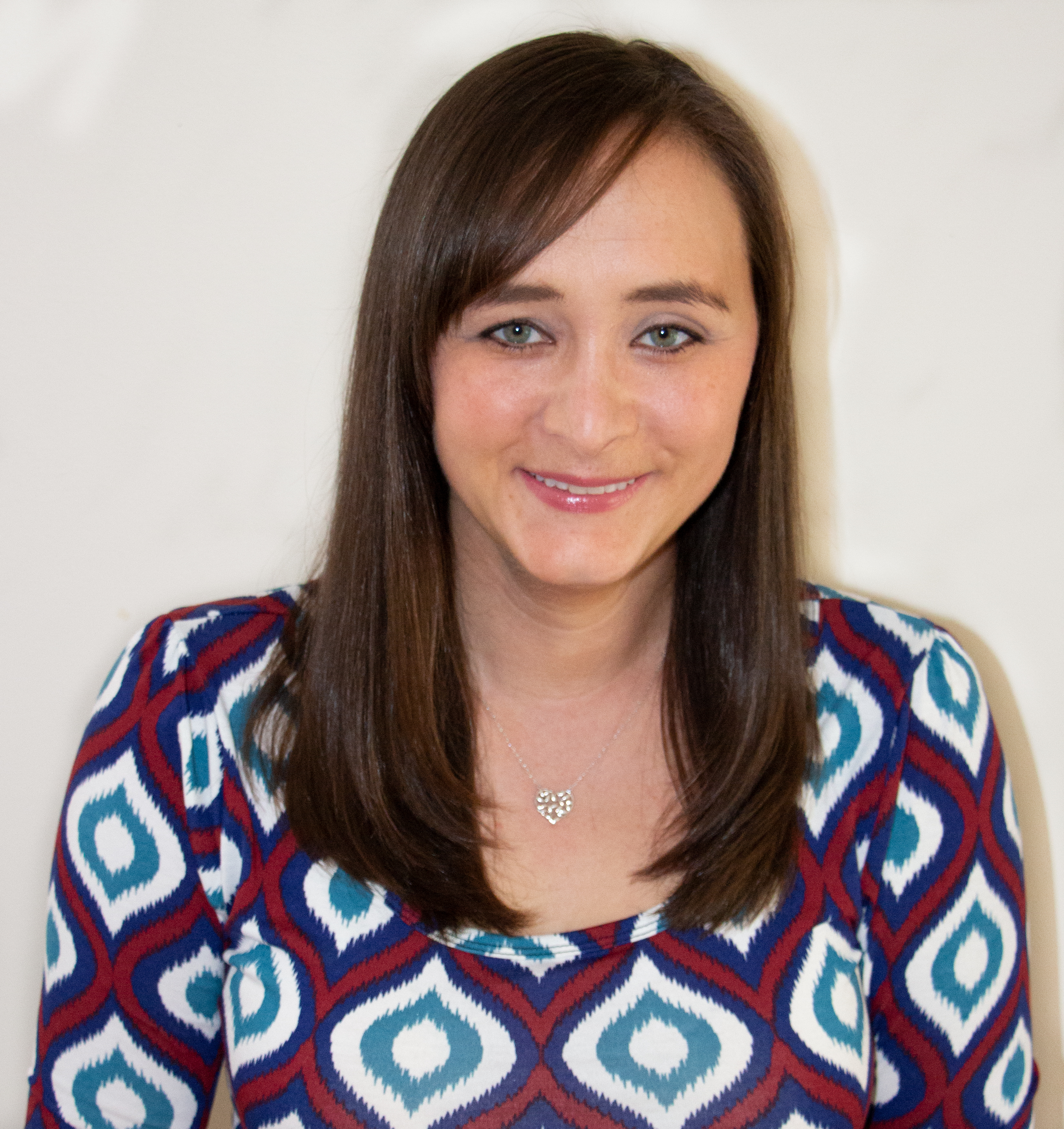
Megan Brazas, MA, CCC-SLP, QOM, is a speech-language pathologist, credentialed early intervention provider, and holds a State of Illinois teaching license. She has extensive experience in working with children with complex communication needs, including autism spectrum disorder, cerebral palsy, Down syndrome, rare medical conditions, and complex orthopedic impairments. Additionally, Megan has experience evaluating and treating a variety of speech and language conditions including apraxia of speech and she is PROMPT Trained.
Megan speaks locally and nationally on topics such as core vocabulary, low-tech communication systems, functional communication, supporting communication in the special education setting, curriculum adaptations, behavior management for autism spectrum disorder, and typical language development. Megan’s contributions include presentations at the Assistive Technology Industry Association (ATIA), Infintec, Northwest Suburban Special Education Organization, and local school districts. Megan is the creator of the Core Vocabulary Exchange System® (CVES™), a low-tech core vocabulary based communication system which aligns with typical language development, published by Northern Speech Services.
Presenter Disclosures:
Financial — Megan Brazas is presenter of online CE courses sponsored by Northern Speech Services; receives royalties.
Financial — Megan Brazas is author and creator of the Core Vocabulary Exchange System® (CVES™) published by Northern Speech Services; receives royalties.
Nonfinancial — Megan Brazas has no relevant nonfinancial relationships to disclose.
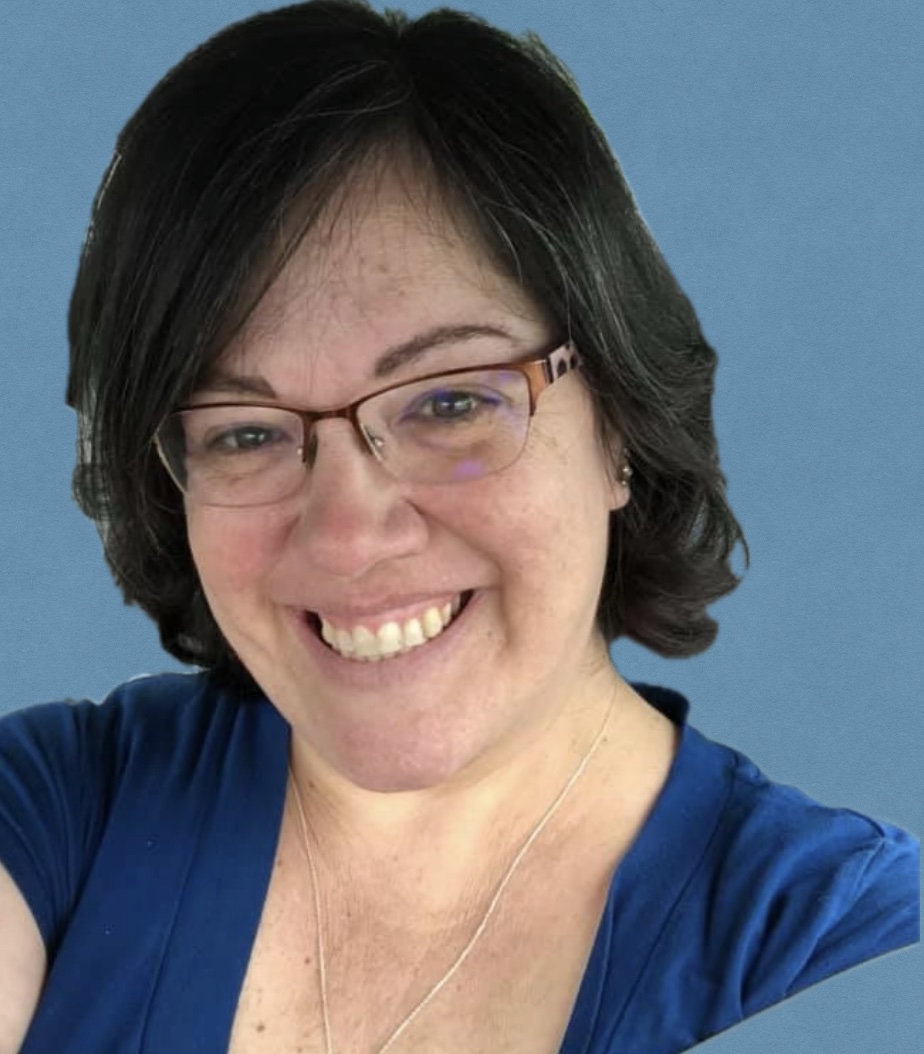
Beth Speaker-Christensen, MA, CCC-SLP/L, ATP, earned both her undergraduate (communicative disorders) and graduate degrees (speech/language pathology) at Northern Illinois University. She has worked in a variety of settings in her 29 years of practice, including skilled nursing facilities, special education cooperatives, Shriners' Hospitals for Children-Chicago, and non-profit clinics. She now owns her own private practice focused on AAC support and interventions. While working at Shriners Hospital, Beth began to explore her passion for assistive technology and Augmentative/Alternate Communication. Beth completed the Assistive Technology Certificate at the University of Illinois at Chicago and went on to obtain the ATP (Assistive Technology Professional) Certification through RESNA (Rehabilitation Engineering and Assistive Technology Society of North America). Currently, Beth sits on the Professional Standards Board of RESNA. She is a member of ASHA Sig 12, ISHA, a member of RESNA, and a member and Chair of the Membership Committee of USSAAC (United States Society of Augmentative/Alternate Communication- the US chapter of ISAAC- the International Society of Augmentative/Alternate Communication). Beth enjoys presenting at local, state, national and international conferences to help share an overall understanding of AAC and AT. Beth joins Megan in her passion for providing comprehensive services for those needing AAC to improve their communication, relationships, their independence and overall quality of life.
Speaker Disclosures:
Financial — Beth Speaker-Christensen is presenter of online CE courses sponsored by Northern Speech Services; receives royalties.
Nonfinancial — Beth Speaker-Christensen has no relevant nonfinancial relationships to disclose.
Intended Audience / Accreditation

This program is offered for 1.5 ASHA CEUs (Intermediate Level; Professional Area).

Intended Audience
- Speech-Language Pathologists
ASHA CEUs: NSS online courses are registered with ASHA and are offered for ASHA CEUs. The number of ASHA CEUs is noted above. Note that 0.1 ASHA CEU = 1 contact hour = equals 1 CEE.
ASHA CE Registry: During the enrollment process, if you select to receive ASHA credit for this course and if you provide your ASHA number, NSS will automatically submit your CEU information to the ASHA CE Registry after successful course completion (80% on post test). This submission happens once per month, during the first week of the month. For example, if you complete your course on November 7th, NSS will submit all November online course CEUs to ASHA during the first week of December. When ASHA inputs the information into their database, they will mark the course as completed on the last day of the month in which it was completed, so November 30th using this example. The certificate of completion available for you to print immediately, however, will reflect the actual completion date, November 7th in this example. Due to ASHA processing procedures please allow 2-3 weeks, from the submission date, for the course to appear on your ASHA transcript.
ASHA CEUs: Attendees must meet at least one of the following conditions in order to be eligible to earn ASHA CEUs:
- Current ASHA Member.
- ASHA Certificate of Clinical Competence (CCC) Holder.
- Licensed by a state or provincial regulatory agency to practice speech-language pathology (SLP) or audiology.
- Credentialed by a state regulatory agency to practice SLP or audiology.
- Credentialed by a national regulatory agency to practice SLP or audiology.
- Engaged in a Clinical Fellowship under the supervision of an individual with their ASHA CCC.
- Currently enrolled in a master's or doctoral program in SLP or audiology.
If an attendee is not an ASHA member or CCC holder but meets any of the above criteria, they may inform the ASHA CE Registry of their eligibility by visiting this site.
Licensing Boards: Most state licensing boards DO accept CEUs earned online (usually classified as home-study credits). Some state boards do, however, place a limit to the number of credits that can be earned via home study/online courses. For the most current information, we suggest that you contact your licensing board or agency to verify acceptance policies and/or any credit limits related to home-study courses prior to registering for this course.
Additional accrediting agencies by which Northern Speech is an approved CE provider:
- California: NSS is approved as a provider of continuing education by the California Speech-Language Pathology & Audiology Board. Provider #PDP4. Online CEU limits may apply; please contact SLPAHADB for current online CEU acceptance policies.
- Iowa: NSS is approved as a provider of continuing education by the Iowa Board of Speech Pathology and Audiology Examiners. Provider #169.
- Kansas: NSS is approved as a provider of continuing education by the Kansas Department of Health and Environment. Provider #LTS-S0005.
- Florida: NSS is approved as a provider of continuing education by the Florida Speech-Language Pathology and Audiology Board. Provider #SPA-026.
- New Jersey: NSS is approved as a provider of continuing education by the New Jersey Department of Education. Provider #1654.
Frequently Asked Questions
Customer Support: Please phone 888.337.3866 or email info@northernspeech.com.
Course Completion Timeframe:
You have unlimited time to complete our online courses. You may log off and log on as often as you’d like to in order to complete all sections of a course.
However, completion dates are based on Eastern Standard Time. Therefore, if you need your CEUs by a certain date, be sure to complete the course test before 11:59pm EST on that date. For example, if you need CEUs before January 1st, you will need to complete the course test before 11:59pm EST on December 31st.
Content Access:
Access to course materials and content does not expire, even after completing the post test. You may continue to review course material by logging into your NSS account, clicking the My Online Courses tab, and then viewing your desired course.
Certificate of Completion:
On successful completion of the post test (80%), a certificate will be immediately available for download and/or printing. This certificate will include your name, date of completion (based on Eastern Time Zone, USA/Canada), and number of contact hours (CEUs / CEEs). Please note that CEUs are awarded on the date of successful test completion, not the date of course enrollment. Please ensure that you successfully complete the post test prior to any licensure renewal dates.
ASHA CE Registry Submission:
During the enrollment process, if you select to receive ASHA credit for this course and if you provide your ASHA number, NSS will automatically submit your CEU information to the ASHA CE Registry after successful course completion (80% on post test). This submission happens once per month, during the first week of the month. For example, if you complete your course on November 7th, NSS will submit all November online course CEUs to ASHA during the first week of December. When ASHA inputs the information into their database, they will mark the course as completed on the last day of the month in which it was completed, so November 30th using this example. The certificate of completion available for you to print immediately, however, will reflect the actual completion date, November 7th in this example. Due to ASHA processing procedures please allow 2-3 weeks, from the submission date, for the course to appear on your ASHA transcript.
Purchase Orders:
Purchase orders are currently not accepted for online orders, if you wish to submit a purchase order please do so at info@northernspeech.com or fax to 888-696-9655.
What is an Online Course?
Our Online Courses consist of video, audio, and/or text content and are offered for ASHA CEUs. Unlike a webinar, which requires participants to be logged on and at a computer at specific times, our Online Courses are available to you at any time, from any device, via your NorthernSpeech.com online account. You may work at your own pace and start and stop your course as you wish. Your course will conclude with a short post test. On successful completion of the post test (>80%), a printable certificate of completion is presented to you.
Receiving CEUs:
Northern Speech is an ASHA CE Provider and our online courses are registered with ASHA and offered for ASHA CEUs. Please note that successful completion of the online post test is required prior to the awarding of CEUs. Please contact your state licensing board for acceptance policies related to CEUs earned online. Please note that courses offered for university students are not applicable for CEUs.
Registering for an online course:
You may browse all online courses by clicking the Continuing Education tab above, then Online Courses. Once you find a course, click Enroll Now, and you will be asked to either log into your existing Northern Speech account or create a new online account. Once you’ve entered your account information and provided your credit card payment, your course will be immediately available to you.
Accessing your purchased course or returning to a purchased course:
You will be able to access your online course by logging into your Northern Speech account and then clicking the My Online Courses tab on your profile screen. Click the course you would like to start or to resume. From there, proceed through the course sections until you are ready to complete the post test. You do not have to complete your course all at once. You may log on and off as you wish.
Testing requirements:
Each online course concludes with a post test consisting of multiple choice or true & false questions. Scores of 80% or greater are required for successful course completion and awarding of CEUs. You may revisit course materials and retest as needed to achieve a passing score.
Number of CEUs offered:
We offer courses from 1 to 21 contact hours. Each course will note the number of CEUs offered. Please note that 0.1 CEU = 1 contact hour = 1 CEE.
State licensing boards and online CEUs:
NSS is an ASHA CE Provider and most state licensing boards DO accept ASHA CEUs earned online (usually classified as home-study credits). Some boards do, however, place a limit to the number of CEUs that can be earned via home study/online courses. For the most current information, we suggest that you contact your licensing board or agency to verify acceptance policies and/or any CEU limits related to home-study courses prior to enrolling in an online course.
Course formats:
Our course formats include: text, audio, video, and PowerPoint with author narration. Each course will note the format on the course description page. Most courses include closed captioning.
Course handouts:
Most of our online courses provide a link to download the accompanying handout as a PDF file.
Group discounts:
Groups of 3 or more are eligible for a 20% discount on each registration on most of our online courses. To receive this discount, registrations need to be processed together via the "Group Rates" tab on the Online Course of your choice.
Computer requirements:
For our online courses to function best, we recommend that you update your computer to include the newest version of your Internet browser (Safari, Chrome, Firefox, Edge, Internet Explorer, etc.) and newest version of your computer's operating system. Also a high-speed Internet connection is recommended (cable or DSL). Speakers or headphones will be required for many of our courses as many contain audio components.
Course Cancellation Policy:
A purchased online course can be exchanged, refunded, or transferred to another individual if contact is made with NSS (via phone or email) within 30 days of purchase and the course materials have not been viewed or downloaded.
Special Needs:
Please click here for any special needs requests, and we will do our best to accommodate them.
| Contact Us |


